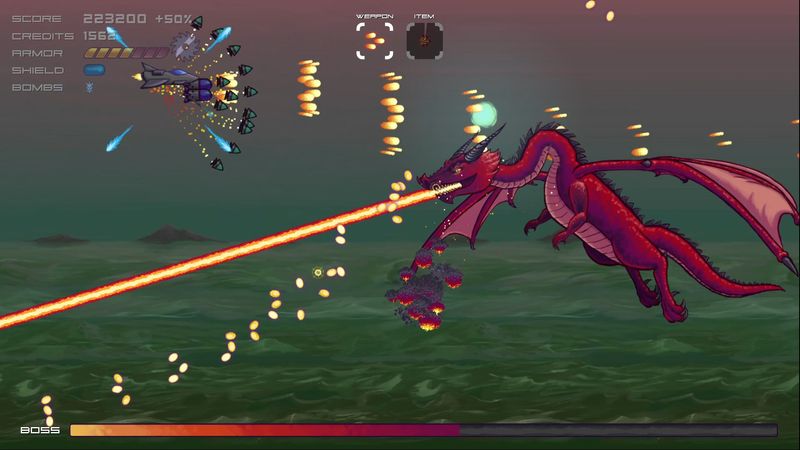As your friendly neighborhood TropeTracker, I jumped right into Operation STEEL. At first glance, its hand-drawn art and arcade feel promise a classic shooter with roguelike twists. Twenty random stages are packed with drones that shoot lasers, big boss rooms, and the constant lure of new weapons. It’s fast-paced, and for a small indie team like Undermog Games, it performs beyond expectations. Yet under the explosions lies a puzzle: it hints at deeper systems but never fully goes there.
Overall Impressions
I quickly spotted the game’s strongest asset: that hand-worked art style. Each ship, enemy turret, and mechanical behemoth looks like it was inked by a caffeine-fueled comic artist rather than spit-polished by a big studio. Combat feels tight, too, with responsive controls and a satisfying “pew-pew” soundtrack anchoring every explosion. But where peer titles in the action-roguelike space layer in deep meta-systems and build diversity, Operation STEEL leans lighter. The runs feel more arcade callback than strategy puzzle, offering bursts of fun but little room for curated strategies.
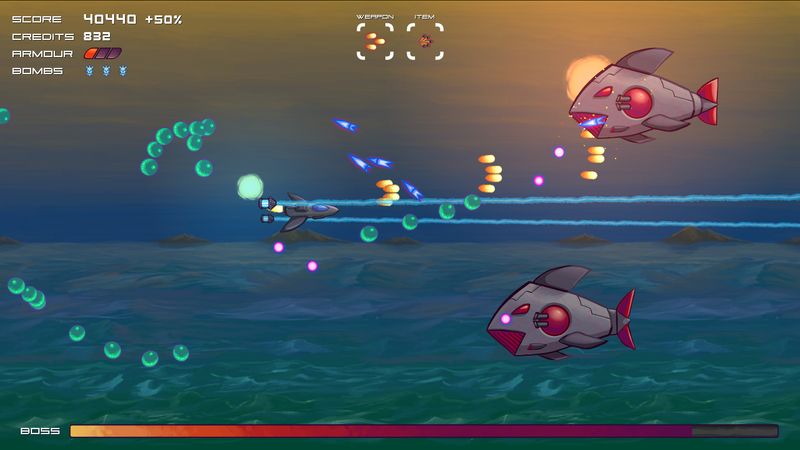
Gameplay Mechanics
Maneuvering your pixel cruiser through bullet storms never grows dull. You start with a standard blaster, then scavenge randomized weapons, passives, and armor between levels. I applaud the shop’s crisp interface—it never stalls momentum. Yet the lack of true meta-progression nags at me. Unlike some contemporaries, you can’t unlock a new starting ship or retain currency. That design choice prevents “best-in-slot” fixation but also undercuts long-term experimentation. Balance feels a touch uneven: some weapon-passive combos steamroll enemies, while others sputter. Still, the mid-level bosses provide a solid spike of tension, and the option to display your ship’s hitbox rewards precision flyers. After one run I discovered a narrow escape route through a hail of shots—pure elation.
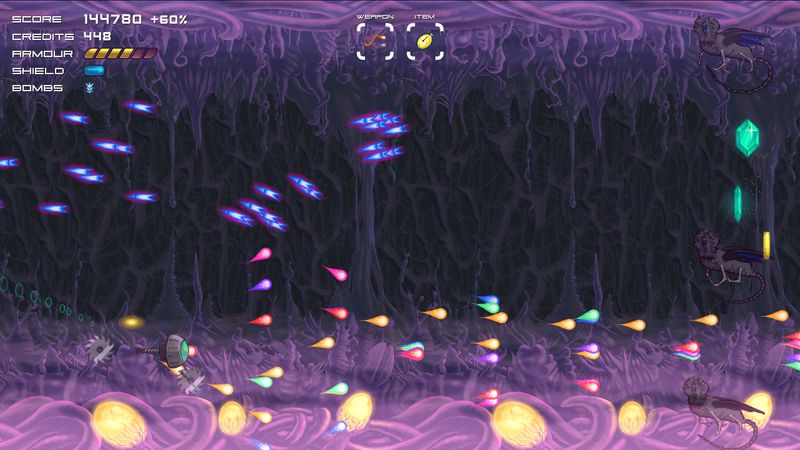
Story and Characters
Operation STEEL isn’t here to win any narrative awards. You helm a lone pilot facing an electronic legion bent on global domination. Dialogue is minimal, limited to brief mission briefs and mission-failed quips. There’s no ensemble cast to bond with, and the world-building amounts to a handful of flavor texts. That brevity may frustrate story junkies, but if you’re in it purely for the shrapnel dance, the sparse narrative steers clear of clichés.
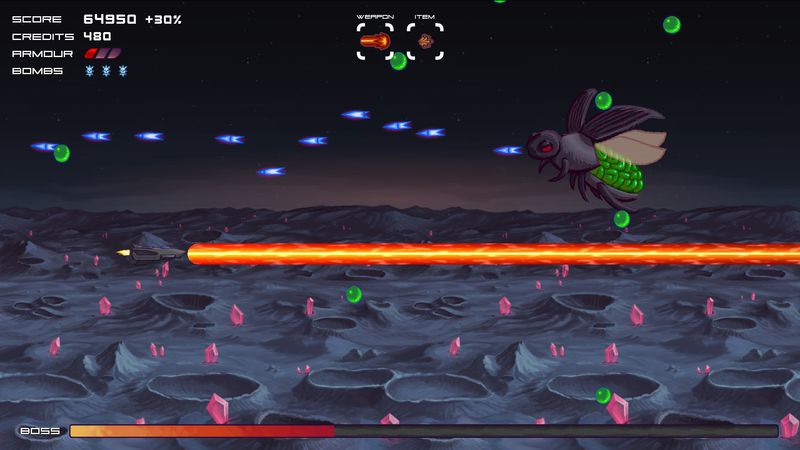
Visuals and Graphics
This game nails a comic-book aesthetic. Enemies pop in bold outlines, and explosions bloom with layered linework. Each level’s theme—ranging from icy caverns to data-stream corridors—feels distinct. Performance never stutters, even when you summon a dozen drones and two hulking bosses onscreen. I liked the branching path design, too: choosing between Flame Core Ridge or Circuit Nexus kept runs from blending together. In an indie market packed with pixel shaders, Operation STEEL’s hand-drawn flair stands out nicely.

Sound and Music
Composer Juan Perez delivers a soundtrack that channels late-’80s arcade halls. Synth pulses drive the tempo, yet tracks can fade into the background after hours of play. Sound effects feel appropriate—guns roar, shields clank—but they rarely surprise. No voice acting or dynamic music shifts accompany boss introductions. For a shooter, it’s serviceable but not show-stopping.

Difficulty and Replayability
This is where the game earns most of its stripes. Procedural levels, random bosses, and weapon variances guarantee that no two runs feel identical. Branching pathways and an in-run shop add strategic forks. For die-hard fans, time-attack and boss-rush modes unlock after a few victories, offering fresh challenges. I found some spikes overly punishing—one boss’s bullet sponge routine recalls old-school trial-and-error—but that’s in keeping with arcade tradition. Several players noted balance quirks, yet few balk at a bit of replay/memorization. Personal tip: enable hitbox display early. Dodging intimate grazes feels deeply rewarding.
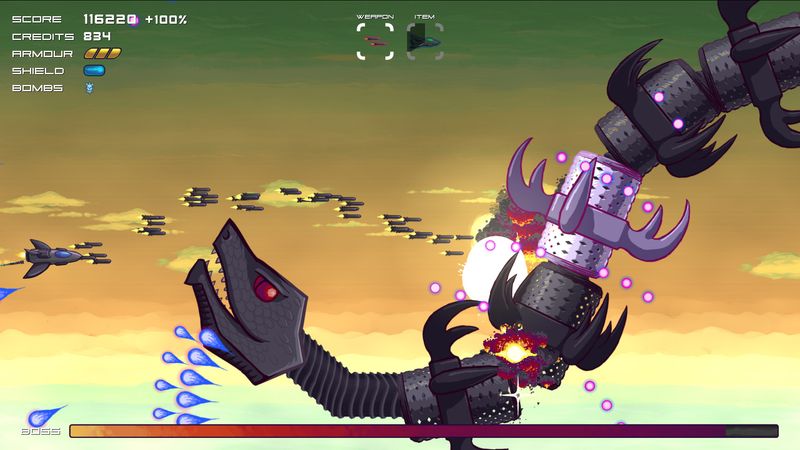
Trivia and Developer Notes
Undermog Games hails from Mexico and comprises a lean team of two core developers. They built Operation STEEL in Unity, leaning on custom tools for animation and procedural generation. The studio launched their first prototype at a local game jam, where players praised its art. That propulsive feedback steered them toward a full release on January 27, 2022. If you dig post-mortem reads, the devs shared notes on using hand-drawn sprites within a modern pipeline. It’s a neat peek behind the curtain for aspiring indie creators.
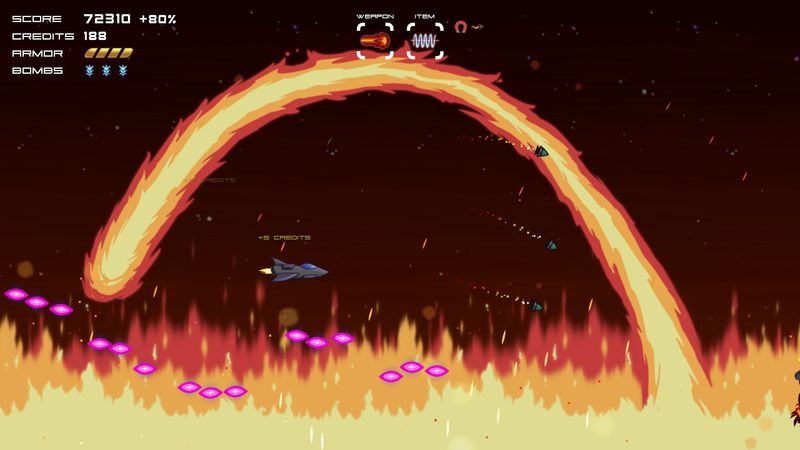
Star Rating: ★★★★☆ (4/5)
Operation STEEL is a snappy, hand-drawn ode to classic shmups, enriched by roguelike randomness. It thrills in short doses but lacks the deeper meta-hooks of genre heavyweights. If you crave tight, twitch-based runs sprinkled with upgrade surprises, you’ll have a blast. If you demand sprawling progression trees and narrative heft, this might feel like a laser-tag session missing a strategic map. Either way, strap in, pilot—those bosses aren’t going to self-destruct.
